The Lublin R.XIII hydro (1931) was a floatplane derived from the Lublin R.XIII, a popular multirole Polish parasol cooperation monoplane used for observation and liaison. It was designed in 1930, first flew in 1931, was ordered and built at the Plage i Laśkiewicz factory in Lublin. 273 were available during the Invasion of Poland and many were also made in the variant Lublin R-XIV military trainer. The Hydro floatplane was declined into the bis, ter and G versions and they were used for naval observation from the naval air squadron in Puck or the riverine squadron in Pinsk. All were lost however in 1939 to enemy raids.
 The company was named after the city, but the true manufacturing name was Plage i Laśkiewicz. LWS also assisted it. The company was founded in 1860 as Fabrykę Wyrobów Miedziowych, a mechanical workshop of copper products. In 1919 it became Plage i Laśkiewicz and started producting aircraft. By February 17, 1920 these were Ansaldo A.1 Balilla and light bombers Ansaldo A.300 under licence, with 70 and 50 made in 1924. After gaining experience, qualityt improved and in 1924, light bombers Potez XV followed (100) by 1925–1926 and 150 Potez 25 in 1928–1931, 11 passenger planes Fokker F-VIIb/3m + 20 modified. Under Jerzy Rudlicki production was under Lublin name with a "R" for Rudlicki. In 1928 was the biplane bomber Lublin R-VIII (6 1930), one became a seaplanes for the Polish naval aviation, which served until 1939.
The company was named after the city, but the true manufacturing name was Plage i Laśkiewicz. LWS also assisted it. The company was founded in 1860 as Fabrykę Wyrobów Miedziowych, a mechanical workshop of copper products. In 1919 it became Plage i Laśkiewicz and started producting aircraft. By February 17, 1920 these were Ansaldo A.1 Balilla and light bombers Ansaldo A.300 under licence, with 70 and 50 made in 1924. After gaining experience, qualityt improved and in 1924, light bombers Potez XV followed (100) by 1925–1926 and 150 Potez 25 in 1928–1931, 11 passenger planes Fokker F-VIIb/3m + 20 modified. Under Jerzy Rudlicki production was under Lublin name with a "R" for Rudlicki. In 1928 was the biplane bomber Lublin R-VIII (6 1930), one became a seaplanes for the Polish naval aviation, which served until 1939.

R-X SP-ABW propaganda model. 7 of these single engine monoplane liaison airplane were made in 1930, a good base to develop the next R-XIII after the previous R-XI and XII prototypes airliners. Fokker seemed at the time a powerful design influence.
There was the parasol wing liaison aircraft Lublin R-X (1929, 7 made) then the R-XIV and army cooperation Lublin R-XIII, first mass-produced Lublin. There were 15 R-XIV in 1930–31, and 223 R-XIIIs in 1932–1935 plus 50 after nationalization while the R-XIX introduced the V-tail. There were 6 air ambulance R-XVIb a,d the prototype two-engine torpedo seaplane Lublin R-XX (1935). However the decision of Ludomił Rayski to gather all aviation industry in state-owned factories banrupted Plage & Laśkiewicz which delivered 7 out of 50 R-XIIIF by late 1935 when production was broken by the Polish MoD. It was nationalized as LWS (Lubelska Wytwórnia Samolotów or "Lublin Aircraft Works"), completed 18 almost ready R-XIIIF, and added 32 more.
The Lublin R-XIII first flew in 1931 and 273 were made until nationalization, the absolute best seller of the company. This single engine monoplane liaison airplane was the product of many years of producting versatile models (such as the Potez 25) under licence. The R.XIII was initiated in development far earlier in 1927, when Polish aviation authorities announced a contest for an army-cooperation plane (samolot towarzyszący) following the French concept. In Polish doctrine it was a general purpose model usable for reconnaissance, observation, liaison, ground support, and capable of operating from improvized airfields. The PZL state factory proposed the PZL Ł-2, (25 made) and the private owned Plage i Laśkiewicz in Lublin the Lublin R-X from Jerzy Rudlicki which first flew in February 1929 with 5 built as R-Xa, plus a long-distance desponstrator. The third competitor was the PWS-5t2.
The Lublin R-Xa won the contests as having the shortest take-off and landing and superior performance in general. However the command wanted improvements and Rudlicki was working on an unarmed trainer R-XIV and observation R-XV models, which both used the R-X construction. If XIII was avoided as "unlucky" by February 1930, the Polish Air Force ordered 15 R-XIV, first made by June 1930 and last delivered by July 1931. This was a two-seater parasol aircraft powered by a 220 hp radial engine, fixed landing gear plus two open cabs in tandem. The R-XV production was not followed by more orders and the army insisted to install an observer's machine gun for tests, with other minor modifications like the tailfin shape adn the army imposed the designation Lublin R-XIII. A prototype was made soon after.
On July 21, 1931, a first batch of R-XIII were ordered, followed the two prototype redesignated R-XIIIA, having a flat fuselage top. Production started with a first batch of 50 R-XIIIB which had an oval fuselage top, a new machine gun ring mount plus longer ailerons among other details. The two R-XIIIA were soon put to R-XIIIB standard. The first production B type emerged by June 7, 1932 and completion ended by March 11, 1933. In 1932, 170 more were ordered and 48 as R-XIIIC (minor modifications) and 95 in the R-XIIID variant, having a Townend ring on the radial engine, new engine cowling, new type of a MG ring mounting. R-XIIID were first tested by February 1933 and production ended by March 2, 1935 with isolated A, B and C vaeriants in repairs and maintenance ported gradually to the R-XIIID standard.
planning to nationalize all aviation industry in Poland. As a result, Plage i Laśkiewicz factory went bankrupt in late 1935, and it was next nationalized under a name LWS took over and purchased the 18 R-XIIIF at scrap value to complete them in short time, then 32 more. Liblin was bankrupt in the meantime. All R-XIIIF joined the Air Force by 1938 with 26 F type complet with the Mors engine, 32 with the 220 hp Wright engine.
In the meantime, there were interesting one-offs, like the 1933, R-XIIIB converted to a long-distance sport plane (Dr) "Blue Bird" for a propaganda flight to Australia, but it crashed in 1935 in Siam. 12 R-XIII were converted also as to blind flying trainers (R-XIIIt) in 1934, others as simple liaison aircraft without armament with a windscreen over the second cab, and others were converted as gliders towing aircraft with a special frame and hook. One also tested the V-tail of Rudlicki, with a better field of fire at the rear, but not adopted.
Three more bis/hydro were ordered (nos. 700-703) for the naval air squadron. In 1933, the Navy ordered ten more of the R-XIII ter/hydro, basically a R-XIIID (nos. 704-713) placed on floats, with all the improvement of the type. In 1934 the Navy purchased its last six R-XIIIG seaplanes, which had a metal propeller (nos. 714-720) among other minor differences. These last ones were delivered by April 1935 as the company ceased to exist. What also seduced the navy was that they could be easily converted to wheeled landing gear if needed.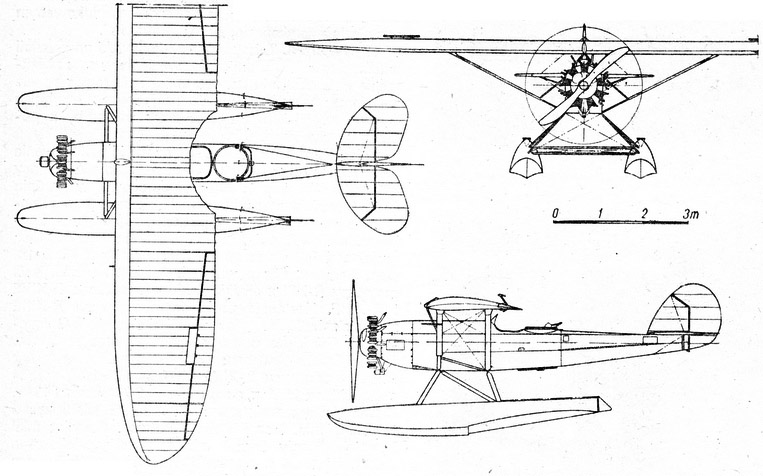
Lublin_R-XIIIbis
The R.XII was of Mixed construction like many models of the day, as wood was workable, flexible, light and affordable. It was conventional in layout, with the whole forward part made in aluminium for the wrapping and steel for the frame. There was a support metal plate after the engine cowling and mount, on which were fixed the floats struts or the uncarriage in an universal fixing system for quick conversion. The rest of the fuselage was entirely in wood covered with canvas, but the top part of the fuselage was in metal, up to the rear machine gunner post. The tail was also in wood and canvas, with a metal frame inside.
As a monoplane "parasol" (French for umbrella) it had braced high wings, perfect in theory to observe the ground, and soon the favorite of Polish aircraft construction, also applied to the PZL lineage. The wings had nice elliptic shapes with a straighter approach and almost pointed tips. Some part of the fuselage were in plywood. The Crew of two sat in tandem in an open cockpit, each having its own post, with twin controls as in case the pilot was injured, the observer, which normally manned the rear 7.92 mm Vickers K air-cooled machine gun on a ring mounting. In some cases twin mountings were seen in 1939 but not on seaplanes.
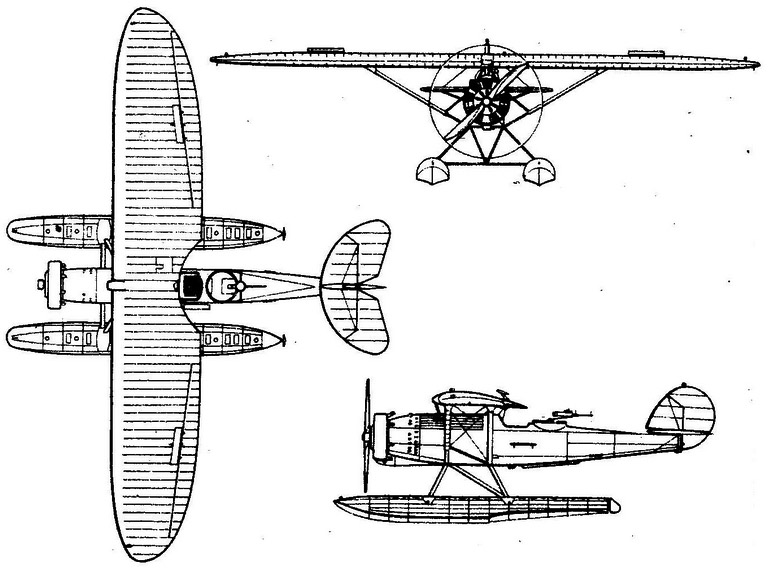
Lublin_R-XIIIG
They had rectangular-elliptical, bipartite, wooden, two-spar panelled covered with plywood and canvas upper wing supported on steel struts and two pairs of duralumin drop struts, crossed with profile bars. They had an IAW-127 NACA airfoil profile. The fuselage had welded steel frames, tubular and covered with linen. The front part had crossed tubes and the rear part was reinforced with wiring. The versatile landing gear was integral with the fuselage structure in a bed welded from steel tubes. The Engine cover and forward cover was made of duralumin sheets. There was a single 200 liters tank in the the forward fuselage behind the engine, riveted from duralumin and with a system of emergency ejection. The forward pilot position was protected by a windshield, not for the rear observer but the latter had a reversiong seat to access controls with a removable joystick.
The empennage was made of welded steel tubes covered with canvas. Fins were stiffened with wires. Horizontal stabilizer were adjustable in flight. Rudders had stabilization horn with aerodynamic shapes and were compensated. The fuselage floor was made of steel tubes.
The R.XIII C/D or hydro bis and ter were powered by the same 9-cylinder air-cooled radial engine Wright Whirlwind J-5 produced under licence in Poland, with either 162 kW (220 hp) in nominal power or a 176 kW (240 hp) in take-off power. No seaplane was tested based on the R-XIIIF, as it had a 250 kW (340 hp) Skoda G-1620A Mors-I that would have been ideal to compensate for the extra drag caused by the floats. The bis had two-blade wooden and the Ter had metal propeller. They all had a fuel tank in the fuselage with 200 liters, placed above a trap in a way to be dropped in case of fire emergency. The prototype seaplane based on the R-XIV had a slaller 135 liter tank.
The only major design changes compared to the land-based variant were the floats and its attachment struts. The two floats arrangement seemed evident, despite the higher drag they caused compared to a single axial float and underwings floats, but they were a more rugged and simpler solution. These floats were ordered to Short in Britain, quite experienced in the manufacture of all-metal floats. They were made of hydronalium, an alliage total waterproof, with redan and water rudder, but the R-XIII bis had them wooden flat-bottomed for the Riverine flotilla in Pinsk.
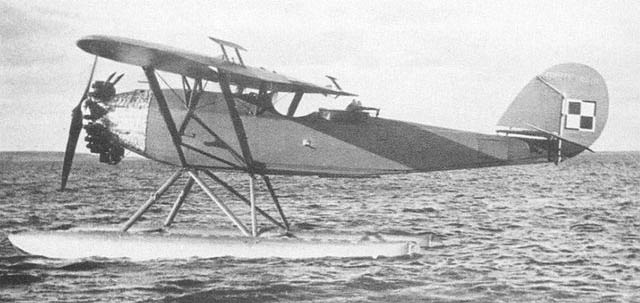
Lublin_RXIII_bis
They were inspired by the many models already in service with the naval air squadron, had internal compartimentation acting as bulkheads in case of perforation, but could not be used to carry extra fuel inside. They had each a tail that could be activated from the cockpit while taxiing. They were attacked on either side of the underbelly by "N" style struts, all metal, held together by two cross section beams, and "V" type inter-struts. The floats were relatively modest to keep drag to the minimum and buoyancy was low. Both floats had upper access hatches for personal storage. It was reported they could carry two 28 kgs bombs, but it wa sprobably under belly, and they had to clear off the floats attachment struts.
The Armament was generally one of two 7.92 mm Vickers K or Lewis LMGs for the observer and machine gunner. Specific to their used were placed attachement points under belly to carry small depth charges and small bombs accesible from the interior of the cockpit, thrown manually by the observer like in WWI. It seems the R-XIII bis had six optional 12.5 kg bombs under the fuselage. The instrument panels differed between the three versions, notably their Badin speedometer with turn indicator, inclinometer, two altimeters and a a compass, as well as the artificial horizon, but also the standard oil and fuel pressure gauges plus the oil thermometer and a time clock.
Curb weight 998 kg, payload 402 kg, max take off weight 1400 kg.
Maximum speed 170 km/h, cruising speed 150 km/h, minimum speed 76 km/h, climb 3.3 m/s, ceiling 3900 m, range 450 km.
Curb weight - 1031 kg, payload - 394 kg, max take off weight 1425 kg.
Top speed 175 km/h, Cruising speed 155 km/h, low speed 76 km/h, climb rate 3.2 m/s, ceiling 3800 m, range 450 km.
Curb weight 1094 kg, payload 331 kg, max weight 1425 kg.
Top speed 175 km/h, cruising speed 155 km/h, climb rate 3.2 m/s, ceiling 3800 m, range 450 km.
Curb weight - 948 kg, payload - 440 kg, max take off weight 1342 kg.
Top speed 185 km/h, cruising speed 165 km/h, climb rate 3.5 m/s, ceiling 4000 m, range 450 km.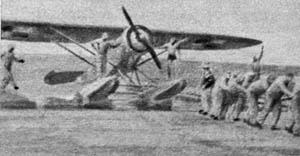 In January 1932, the Naval Aviation Squadron ordered three Lublin R-XIII hydro with wooden flat-bottomed floats, from Plage & Laśkiewicz, designated later bis/hydro, and delivered in October and November 1932, numbered 701, 702 and 703. They arrived with spare landing gear and skis. They were soon impressed into the Naval Aviation Squadron in Puck. no. 701 flew to Pińsk and was damaged on June 8, 1933, the second, 702, was also damaged on July 10, 1933. Accidents resulted in attempt to make them river seaplanes. They were repaired and returned to Puck until sent back to Polesie with wheeled chassis, stationed at the Mosty Wolańskie airport. 701 was destroyed on October 23, 1934 north of Piława, the rest survived until the war, evacuated to the Hel Peninsula after the attack on September 8 and destroyed by their own staff after taking damage. Abother version says these bis models were in the River Air Squadron in Pińsk until 1937, and then decom. in Puck, proposed to Estonia.
In January 1932, the Naval Aviation Squadron ordered three Lublin R-XIII hydro with wooden flat-bottomed floats, from Plage & Laśkiewicz, designated later bis/hydro, and delivered in October and November 1932, numbered 701, 702 and 703. They arrived with spare landing gear and skis. They were soon impressed into the Naval Aviation Squadron in Puck. no. 701 flew to Pińsk and was damaged on June 8, 1933, the second, 702, was also damaged on July 10, 1933. Accidents resulted in attempt to make them river seaplanes. They were repaired and returned to Puck until sent back to Polesie with wheeled chassis, stationed at the Mosty Wolańskie airport. 701 was destroyed on October 23, 1934 north of Piława, the rest survived until the war, evacuated to the Hel Peninsula after the attack on September 8 and destroyed by their own staff after taking damage. Abother version says these bis models were in the River Air Squadron in Pińsk until 1937, and then decom. in Puck, proposed to Estonia.
In May 1933, the Naval Air Squadron ordered ten R-XIII ter/hydro based on the R-XIIID with KZA type turntables and numbered from 704 to 713. Each came with optional wheeled landing gear and skis. They were all assigned to the Naval Squadron in Puck, from March to June 1934, squadrons I and II. Three visited Copenhagen on August 22-25, 1934. Four were also lost by accident and one so worn out it was decommissioned.
In May 1934, six R-XIIIG versions were received, differing in several aspects and one R-XIIIG for the naval air squadron in exchange for the 4th Lublin R-VIII bis seaplane never completed. Numbered 714 to 720 these G type arrived with their land landing gear replaced with metal floats and SS-32 bis turntables, delivered in March-April 1935, assigned to the 2nd Squadron and riverine unit in Pinsk, used for crew training and reconnaissance. In 1939, three R-XIII ter and R-XIII G were destroyed and by August 31, 1939, four R-XIII ter and six R-XIIIG remained, evacuated to Hel, making just two combat sorties.
In the Naval Air Squadron at Puck, there were eleven R-XIIIter and R-XIIIG floatplanes active in 1939. No. 714 was sent on September 7 to search for the battleship Schleswig-Holstein in Danzig but failed to locate it. The base commander indeed planned to bomb her with its seaplanes. The crew had two bombs and claimed to have bombed the civilian victory parade in Danzig (celebrating capturing of Westerplatte) but it asnot confirmed in German sources. On September 8, all planes, evacuated in another bay near Hel were bombed and almost all destoyed. None make it to Britain. The squadron was virtually anihliated and they played almost no part in the campaign, apart observation flights. A non-flying replica of the R-XIIIG/hydro is on display today at the MDLOT Museum in Puck, however.
Story of the Lublin R.XIII Hydro
About Lublin (1920-1935)
 The company was named after the city, but the true manufacturing name was Plage i Laśkiewicz. LWS also assisted it. The company was founded in 1860 as Fabrykę Wyrobów Miedziowych, a mechanical workshop of copper products. In 1919 it became Plage i Laśkiewicz and started producting aircraft. By February 17, 1920 these were Ansaldo A.1 Balilla and light bombers Ansaldo A.300 under licence, with 70 and 50 made in 1924. After gaining experience, qualityt improved and in 1924, light bombers Potez XV followed (100) by 1925–1926 and 150 Potez 25 in 1928–1931, 11 passenger planes Fokker F-VIIb/3m + 20 modified. Under Jerzy Rudlicki production was under Lublin name with a "R" for Rudlicki. In 1928 was the biplane bomber Lublin R-VIII (6 1930), one became a seaplanes for the Polish naval aviation, which served until 1939.
The company was named after the city, but the true manufacturing name was Plage i Laśkiewicz. LWS also assisted it. The company was founded in 1860 as Fabrykę Wyrobów Miedziowych, a mechanical workshop of copper products. In 1919 it became Plage i Laśkiewicz and started producting aircraft. By February 17, 1920 these were Ansaldo A.1 Balilla and light bombers Ansaldo A.300 under licence, with 70 and 50 made in 1924. After gaining experience, qualityt improved and in 1924, light bombers Potez XV followed (100) by 1925–1926 and 150 Potez 25 in 1928–1931, 11 passenger planes Fokker F-VIIb/3m + 20 modified. Under Jerzy Rudlicki production was under Lublin name with a "R" for Rudlicki. In 1928 was the biplane bomber Lublin R-VIII (6 1930), one became a seaplanes for the Polish naval aviation, which served until 1939.

R-X SP-ABW propaganda model. 7 of these single engine monoplane liaison airplane were made in 1930, a good base to develop the next R-XIII after the previous R-XI and XII prototypes airliners. Fokker seemed at the time a powerful design influence.
There was the parasol wing liaison aircraft Lublin R-X (1929, 7 made) then the R-XIV and army cooperation Lublin R-XIII, first mass-produced Lublin. There were 15 R-XIV in 1930–31, and 223 R-XIIIs in 1932–1935 plus 50 after nationalization while the R-XIX introduced the V-tail. There were 6 air ambulance R-XVIb a,d the prototype two-engine torpedo seaplane Lublin R-XX (1935). However the decision of Ludomił Rayski to gather all aviation industry in state-owned factories banrupted Plage & Laśkiewicz which delivered 7 out of 50 R-XIIIF by late 1935 when production was broken by the Polish MoD. It was nationalized as LWS (Lubelska Wytwórnia Samolotów or "Lublin Aircraft Works"), completed 18 almost ready R-XIIIF, and added 32 more.
The base model: Lublin R.XIII

The Lublin R-XIII first flew in 1931 and 273 were made until nationalization, the absolute best seller of the company. This single engine monoplane liaison airplane was the product of many years of producting versatile models (such as the Potez 25) under licence. The R.XIII was initiated in development far earlier in 1927, when Polish aviation authorities announced a contest for an army-cooperation plane (samolot towarzyszący) following the French concept. In Polish doctrine it was a general purpose model usable for reconnaissance, observation, liaison, ground support, and capable of operating from improvized airfields. The PZL state factory proposed the PZL Ł-2, (25 made) and the private owned Plage i Laśkiewicz in Lublin the Lublin R-X from Jerzy Rudlicki which first flew in February 1929 with 5 built as R-Xa, plus a long-distance desponstrator. The third competitor was the PWS-5t2.
The Lublin R-Xa won the contests as having the shortest take-off and landing and superior performance in general. However the command wanted improvements and Rudlicki was working on an unarmed trainer R-XIV and observation R-XV models, which both used the R-X construction. If XIII was avoided as "unlucky" by February 1930, the Polish Air Force ordered 15 R-XIV, first made by June 1930 and last delivered by July 1931. This was a two-seater parasol aircraft powered by a 220 hp radial engine, fixed landing gear plus two open cabs in tandem. The R-XV production was not followed by more orders and the army insisted to install an observer's machine gun for tests, with other minor modifications like the tailfin shape adn the army imposed the designation Lublin R-XIII. A prototype was made soon after.
On July 21, 1931, a first batch of R-XIII were ordered, followed the two prototype redesignated R-XIIIA, having a flat fuselage top. Production started with a first batch of 50 R-XIIIB which had an oval fuselage top, a new machine gun ring mount plus longer ailerons among other details. The two R-XIIIA were soon put to R-XIIIB standard. The first production B type emerged by June 7, 1932 and completion ended by March 11, 1933. In 1932, 170 more were ordered and 48 as R-XIIIC (minor modifications) and 95 in the R-XIIID variant, having a Townend ring on the radial engine, new engine cowling, new type of a MG ring mounting. R-XIIID were first tested by February 1933 and production ended by March 2, 1935 with isolated A, B and C vaeriants in repairs and maintenance ported gradually to the R-XIIID standard.
Later variants
In 1933, the R-XXI was to replace the R-XIII but was not accepted, versus the RWD-14 Czapla but some features (higher/rounded cross-section fuselage, new tail fin) were ported on the R-XIIIE (prototype built in 1934) this time pulled by a beefier 360 hp engine Gnome-Rhone 7K Titan. It was not produced, but hope for the next R-XIIIF equipped with a 340 hp Skoda G-1620A Mors-I radia were promising. The prototype was succesful and a series of 50 F type were ordered in 1934, 7 delivered when Polish aviation authorities abruptky refused to purchase the next batch of 18 aircraft, and broke the contract, in the process of nationalizing all aircraft production.planning to nationalize all aviation industry in Poland. As a result, Plage i Laśkiewicz factory went bankrupt in late 1935, and it was next nationalized under a name LWS took over and purchased the 18 R-XIIIF at scrap value to complete them in short time, then 32 more. Liblin was bankrupt in the meantime. All R-XIIIF joined the Air Force by 1938 with 26 F type complet with the Mors engine, 32 with the 220 hp Wright engine.
In the meantime, there were interesting one-offs, like the 1933, R-XIIIB converted to a long-distance sport plane (Dr) "Blue Bird" for a propaganda flight to Australia, but it crashed in 1935 in Siam. 12 R-XIII were converted also as to blind flying trainers (R-XIIIt) in 1934, others as simple liaison aircraft without armament with a windscreen over the second cab, and others were converted as gliders towing aircraft with a special frame and hook. One also tested the V-tail of Rudlicki, with a better field of fire at the rear, but not adopted.
Lublin R.XIII: The floatplane variant
Development
In 1931, for what we are concerned, a single R-XIV was experimentally tested on floats to provide the growing needs of the Polish Navy (Marynarka Vojenna) which lacked modern seaplanes. Tests were good, followed by official tests with Navy top brass present, which weere enthusiastic. So the Polish Navy designated this new model R-XIII bis/hydro, equivalents to the the land based R.XIIIC.Three more bis/hydro were ordered (nos. 700-703) for the naval air squadron. In 1933, the Navy ordered ten more of the R-XIII ter/hydro, basically a R-XIIID (nos. 704-713) placed on floats, with all the improvement of the type. In 1934 the Navy purchased its last six R-XIIIG seaplanes, which had a metal propeller (nos. 714-720) among other minor differences. These last ones were delivered by April 1935 as the company ceased to exist. What also seduced the navy was that they could be easily converted to wheeled landing gear if needed.
Design

Lublin_R-XIIIbis
The R.XII was of Mixed construction like many models of the day, as wood was workable, flexible, light and affordable. It was conventional in layout, with the whole forward part made in aluminium for the wrapping and steel for the frame. There was a support metal plate after the engine cowling and mount, on which were fixed the floats struts or the uncarriage in an universal fixing system for quick conversion. The rest of the fuselage was entirely in wood covered with canvas, but the top part of the fuselage was in metal, up to the rear machine gunner post. The tail was also in wood and canvas, with a metal frame inside.
As a monoplane "parasol" (French for umbrella) it had braced high wings, perfect in theory to observe the ground, and soon the favorite of Polish aircraft construction, also applied to the PZL lineage. The wings had nice elliptic shapes with a straighter approach and almost pointed tips. Some part of the fuselage were in plywood. The Crew of two sat in tandem in an open cockpit, each having its own post, with twin controls as in case the pilot was injured, the observer, which normally manned the rear 7.92 mm Vickers K air-cooled machine gun on a ring mounting. In some cases twin mountings were seen in 1939 but not on seaplanes.

Lublin_R-XIIIG
They had rectangular-elliptical, bipartite, wooden, two-spar panelled covered with plywood and canvas upper wing supported on steel struts and two pairs of duralumin drop struts, crossed with profile bars. They had an IAW-127 NACA airfoil profile. The fuselage had welded steel frames, tubular and covered with linen. The front part had crossed tubes and the rear part was reinforced with wiring. The versatile landing gear was integral with the fuselage structure in a bed welded from steel tubes. The Engine cover and forward cover was made of duralumin sheets. There was a single 200 liters tank in the the forward fuselage behind the engine, riveted from duralumin and with a system of emergency ejection. The forward pilot position was protected by a windshield, not for the rear observer but the latter had a reversiong seat to access controls with a removable joystick.
The empennage was made of welded steel tubes covered with canvas. Fins were stiffened with wires. Horizontal stabilizer were adjustable in flight. Rudders had stabilization horn with aerodynamic shapes and were compensated. The fuselage floor was made of steel tubes.
The R.XIII C/D or hydro bis and ter were powered by the same 9-cylinder air-cooled radial engine Wright Whirlwind J-5 produced under licence in Poland, with either 162 kW (220 hp) in nominal power or a 176 kW (240 hp) in take-off power. No seaplane was tested based on the R-XIIIF, as it had a 250 kW (340 hp) Skoda G-1620A Mors-I that would have been ideal to compensate for the extra drag caused by the floats. The bis had two-blade wooden and the Ter had metal propeller. They all had a fuel tank in the fuselage with 200 liters, placed above a trap in a way to be dropped in case of fire emergency. The prototype seaplane based on the R-XIV had a slaller 135 liter tank.
The only major design changes compared to the land-based variant were the floats and its attachment struts. The two floats arrangement seemed evident, despite the higher drag they caused compared to a single axial float and underwings floats, but they were a more rugged and simpler solution. These floats were ordered to Short in Britain, quite experienced in the manufacture of all-metal floats. They were made of hydronalium, an alliage total waterproof, with redan and water rudder, but the R-XIII bis had them wooden flat-bottomed for the Riverine flotilla in Pinsk.

Lublin_RXIII_bis
They were inspired by the many models already in service with the naval air squadron, had internal compartimentation acting as bulkheads in case of perforation, but could not be used to carry extra fuel inside. They had each a tail that could be activated from the cockpit while taxiing. They were attacked on either side of the underbelly by "N" style struts, all metal, held together by two cross section beams, and "V" type inter-struts. The floats were relatively modest to keep drag to the minimum and buoyancy was low. Both floats had upper access hatches for personal storage. It was reported they could carry two 28 kgs bombs, but it wa sprobably under belly, and they had to clear off the floats attachment struts.
The Armament was generally one of two 7.92 mm Vickers K or Lewis LMGs for the observer and machine gunner. Specific to their used were placed attachement points under belly to carry small depth charges and small bombs accesible from the interior of the cockpit, thrown manually by the observer like in WWI. It seems the R-XIII bis had six optional 12.5 kg bombs under the fuselage. The instrument panels differed between the three versions, notably their Badin speedometer with turn indicator, inclinometer, two altimeters and a a compass, as well as the artificial horizon, but also the standard oil and fuel pressure gauges plus the oil thermometer and a time clock.
Detailed specs
Specs Lublin R.XIII | |
| Crew: | Two, pilot and observer |
| Fuselage Lenght | 8.2 m (26 ft 11 in) |
| Wingspan | 13.25 m (43 ft 6 in), area 24.5 m2 (264 sq ft) |
| Height | 2.76 m (9 ft 1 in) |
| Empty weight: | 891 kg (1,964 lb) |
| Gross weight: | 1,330 kg (2,932 lb) |
| Powerplant: | Wright Whirlwind J-5 9-cyl. radial 160 kW (220 hp) |
| Propeller: | 2-bladed Somanski fixed pitch, wooden |
| Maximum speed: | |
| Cruise speed: | |
| Top speed: | c160 km/h (105 mph, 90 kn) at sea level |
| Endurance: | 200 L (44 imp gal; 53 US gal) |
| Range: | 600 km (370 mi, 320 nmi) |
| Service ceiling: | c4,000 m (13,000 ft) |
| Armament - Guns | rear 7.7 mm (0.303 in) Scarff ring |
| Armament - Bombs | 2x 28kg* |
Specific Tech Data
R-XIII bis/hydro
Span - 13.25 m, length - 9.13 m, height before modifications 3.24 m, after modifications 3.08 m, wing area 24.5 m2.Curb weight 998 kg, payload 402 kg, max take off weight 1400 kg.
Maximum speed 170 km/h, cruising speed 150 km/h, minimum speed 76 km/h, climb 3.3 m/s, ceiling 3900 m, range 450 km.
R-XIII ter/hydro
Span: 13.25 m, length 9.13 m, height 3.08 m, wing area 24.5 m2.Curb weight - 1031 kg, payload - 394 kg, max take off weight 1425 kg.
Top speed 175 km/h, Cruising speed 155 km/h, low speed 76 km/h, climb rate 3.2 m/s, ceiling 3800 m, range 450 km.
R-XIIIG/hydro
Span 13.25 m, length 9.4 m, height 3.08 m, wing area 24.5 m2.Curb weight 1094 kg, payload 331 kg, max weight 1425 kg.
Top speed 175 km/h, cruising speed 155 km/h, climb rate 3.2 m/s, ceiling 3800 m, range 450 km.
R-XIIIG land based
Span - 13.25 m, length - 8.46 m, height - 2.76 m, wing area 24.5 m2.Curb weight - 948 kg, payload - 440 kg, max take off weight 1342 kg.
Top speed 185 km/h, cruising speed 165 km/h, climb rate 3.5 m/s, ceiling 4000 m, range 450 km.
The R.XIII Hydro in action:
 In January 1932, the Naval Aviation Squadron ordered three Lublin R-XIII hydro with wooden flat-bottomed floats, from Plage & Laśkiewicz, designated later bis/hydro, and delivered in October and November 1932, numbered 701, 702 and 703. They arrived with spare landing gear and skis. They were soon impressed into the Naval Aviation Squadron in Puck. no. 701 flew to Pińsk and was damaged on June 8, 1933, the second, 702, was also damaged on July 10, 1933. Accidents resulted in attempt to make them river seaplanes. They were repaired and returned to Puck until sent back to Polesie with wheeled chassis, stationed at the Mosty Wolańskie airport. 701 was destroyed on October 23, 1934 north of Piława, the rest survived until the war, evacuated to the Hel Peninsula after the attack on September 8 and destroyed by their own staff after taking damage. Abother version says these bis models were in the River Air Squadron in Pińsk until 1937, and then decom. in Puck, proposed to Estonia.
In January 1932, the Naval Aviation Squadron ordered three Lublin R-XIII hydro with wooden flat-bottomed floats, from Plage & Laśkiewicz, designated later bis/hydro, and delivered in October and November 1932, numbered 701, 702 and 703. They arrived with spare landing gear and skis. They were soon impressed into the Naval Aviation Squadron in Puck. no. 701 flew to Pińsk and was damaged on June 8, 1933, the second, 702, was also damaged on July 10, 1933. Accidents resulted in attempt to make them river seaplanes. They were repaired and returned to Puck until sent back to Polesie with wheeled chassis, stationed at the Mosty Wolańskie airport. 701 was destroyed on October 23, 1934 north of Piława, the rest survived until the war, evacuated to the Hel Peninsula after the attack on September 8 and destroyed by their own staff after taking damage. Abother version says these bis models were in the River Air Squadron in Pińsk until 1937, and then decom. in Puck, proposed to Estonia.
In May 1933, the Naval Air Squadron ordered ten R-XIII ter/hydro based on the R-XIIID with KZA type turntables and numbered from 704 to 713. Each came with optional wheeled landing gear and skis. They were all assigned to the Naval Squadron in Puck, from March to June 1934, squadrons I and II. Three visited Copenhagen on August 22-25, 1934. Four were also lost by accident and one so worn out it was decommissioned.
In May 1934, six R-XIIIG versions were received, differing in several aspects and one R-XIIIG for the naval air squadron in exchange for the 4th Lublin R-VIII bis seaplane never completed. Numbered 714 to 720 these G type arrived with their land landing gear replaced with metal floats and SS-32 bis turntables, delivered in March-April 1935, assigned to the 2nd Squadron and riverine unit in Pinsk, used for crew training and reconnaissance. In 1939, three R-XIII ter and R-XIII G were destroyed and by August 31, 1939, four R-XIII ter and six R-XIIIG remained, evacuated to Hel, making just two combat sorties.
In the Naval Air Squadron at Puck, there were eleven R-XIIIter and R-XIIIG floatplanes active in 1939. No. 714 was sent on September 7 to search for the battleship Schleswig-Holstein in Danzig but failed to locate it. The base commander indeed planned to bomb her with its seaplanes. The crew had two bombs and claimed to have bombed the civilian victory parade in Danzig (celebrating capturing of Westerplatte) but it asnot confirmed in German sources. On September 8, all planes, evacuated in another bay near Hel were bombed and almost all destoyed. None make it to Britain. The squadron was virtually anihliated and they played almost no part in the campaign, apart observation flights. A non-flying replica of the R-XIIIG/hydro is on display today at the MDLOT Museum in Puck, however.
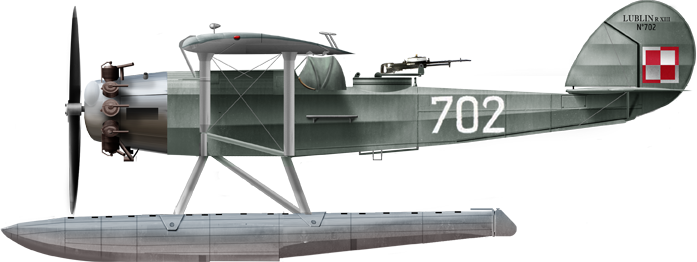
R.XIII bis Hydro
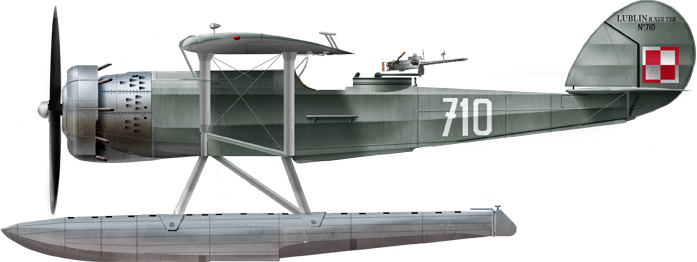
R.XIII ter Hydro
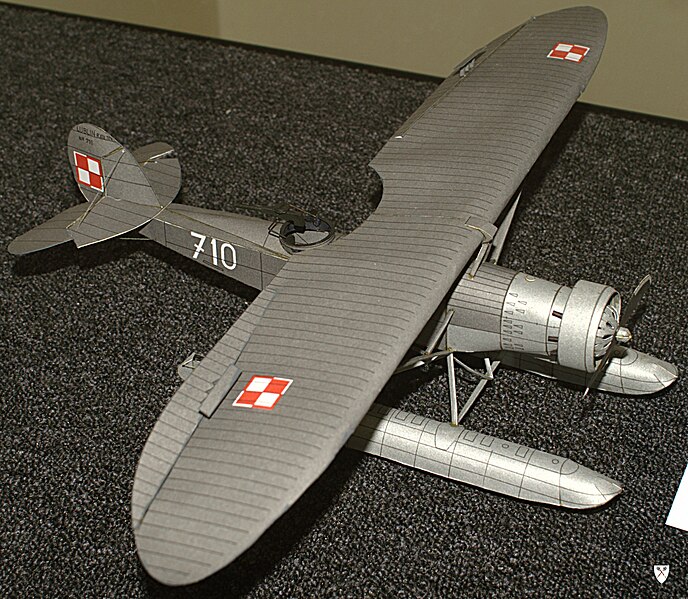
Lublin_R-XIII-711
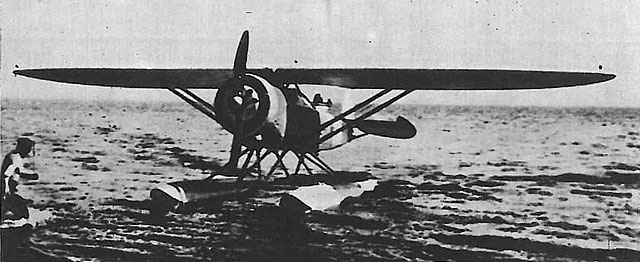
Lublin_RXIII_MDLot
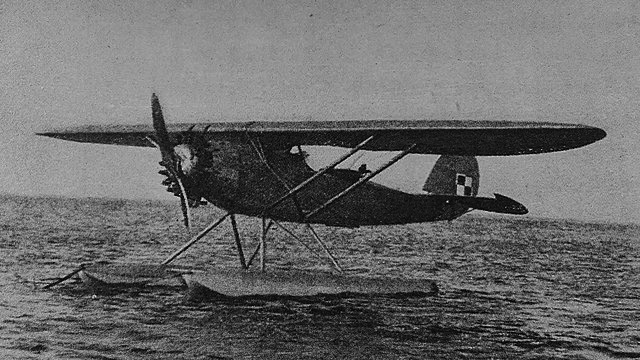
RXIII_bis_wodnopłatowiec_pol
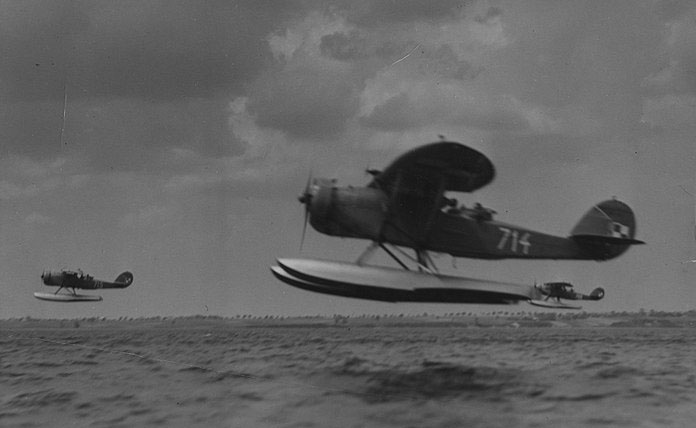
Lublin_RXIIIs_takingOff

3 views from pinterest, XIII ter serial 704, Puck 1934

R-XIII ter, Serial 707, MDL, Puck 1934

R-XIII ter, Serial 712, Puck, Poland 1937


Model diorama


Model kit showing its wheeled undercarriage
Read More and Sources
links
aeroflight.co.ukww2aircraft.net
gruppofalchi.com
forgottenairfields.com
pen-and-sword.co.uk
boxartden.com
historyofwar.org
en.wikipedia.org
samolotypolskie.pl
Model Kits
Photo of a model kit book and montage on pinterestMirage Hobby 1:48 on scalemates
Video
- Lohner E (1913)
- Macchi M3 (1916)
- Macchi M5 (1918)
- Ansaldo ISVA (1918)
- Sopwith Baby (1916)
- Short 184 (1916)
- Fairey Campania (1917)
- Sopwith Cuckoo (1917)
- Felixstowe F.2 (1917)
- Friedrichshafen FF 33 (1916)
- Albatros W4 (1916)
- Albatros W8 (1918)
- Hanriot HD.2
- Grigorovitch M5
- IJN Farman MF.7
- IJN Yokosho Type Mo
- Yokosho Rogou Kougata (1917)
- Yokosuka Igo-Ko (1920)
- Curtiss N9 (1916)
- Aeromarine 39
- Vought VE-7
- Douglas DT (1921)
- Boeing FB.5 (1923)
- Boeing F4B (1928)
- Vought O2U/O3U Corsair (1928)
- Blackburn Blackburn (1922)
- Supermarine Seagull (1922)
- Blackburn Ripon (1926)
- Fairey IIIF (1927)
- Fairey Seal (1930)
- LGL-32 C.1 (1927)
- Caspar U1 (1921)
- Dornier Do J Wal (1922)
- Rohrbach R-III (1924)
- Mitsubishi 1MF (1923)
- Mitsubishi B1M (1923)
- Yokosuka E1Y (1923)
- Nakajima A1N (1927)
- Nakajima E2N (1927)
- Mitsubishi B2M (1927)
- Nakajima A4N (1929)
- CANT 18
WW1
✠ K.u.K. Seefliegerkorps:
 Italian Naval Aviation
Italian Naval Aviation
 RNAS
RNAS
 Marineflieger
Marineflieger
 French Naval Aviation
French Naval Aviation
 Russian Naval Aviation
Russian Naval Aviation
 IJN Air Service
IJN Air Service
 USA
USA
Interwar
 Interwar US
Interwar US
 Interwar Britain
Interwar Britain
 Interwar France
Interwar France
 Interwar Germany
Interwar Germany
 Interwar Japan
Interwar Japan
 Interwar Italy
Interwar Italy
- Curtiss SOC seagull (1934)
- Grumman FF (1931)
- Curtiss F11C Goshawk (1932)
- Grumman F2F (1933)
- Grumman F3F (1935)
- Northrop BT-1 (1935)
- Grumman J2F Duck (1936)
- Consolidated PBY Catalina (1935)
- Brewster/NAF SBN-1 (1936)
- Curtiss SBC Helldiver (1936)
- Vought SB2U Vindicator (1936)
- Brewster F2A Buffalo (1937)
- Douglas TBD Devastator (1937)
- Vought Kingfisher (1938)
- Curtiss SO3C Seamew (1939)
- Douglas SBD Dauntless (1939)
- Grumman F4F Wildcat (1940)
- F4U Corsair (NE) (1940)
- Brewster SB2A Buccaneer (1941)
- Grumman TBF/TBM Avenger (1941)
- Consolidated TBY Sea Wolf (1941)
- Grumman F6F Hellcat (1942)
- Curtiss SB2C Helldiver (1942)
- Curtiss SC Seahawk (1944)
- Grumman F8F Bearcat (1944)
- Ryan FR-1 Fireball (1944)
- Douglas AD-1 Skyraider (1945)
Fleet Air Arm
- Fairey Swordfish (1934)
- Blackburn Shark (1934)
- Supermarine Walrus (1936)
- Fairey Seafox (1936)
- Blackburn Skua (1937)
- Short Sunderland (1937)
- Blackburn Roc (1938)
- Fairey Albacore (1940)
- Fairey Fulmar (1940)
- Grumman Martlet (1941)
- Hawker sea Hurricane (1941)
- Brewster Bermuda (1942)
- Fairey Barracuda (1943)
- Fairey Firefly (1943)
- Grumman Tarpon (1943)
- Grumman Gannet (1943)
- Supermarine seafire (1943)
- Blackburn Firebrand (1944)
- Hawker Sea Fury (1944)
IJN aviation
- Aichi D1A "Susie" (1934)
- Mitsubishi A5M "Claude" (1935)
- Nakajima A4N (1935)
- Yokosuka B4Y "Jean" (1935)
- Mitsubishi G3M "Nell" (1935)
- Nakajima E8N "Dave" (1935)
- Kawanishi E7K "Alf" (1935)
- Nakajima B5N "Kate" (1937)
- Kawanishi H6K "Mavis" (1938)
- Aichi D3A "Val" (1940)
- Mitsubishi A6M "zeke" (1940)
- Nakajima E14Y "Glen" (1941)
- Nakajima B6N "Jill" (1941)
- Mitsubishi F1M "pete" (1941)
- Aichi E13A Reisu "Jake" (1941)
- Kawanishi E15K Shiun "Norm" (1941)
- Nakajima C6N Saiun "Myrt" (1942)
- Yokosuka D4Y "Judy" (1942)
- Kyushu Q1W Tokai "Lorna" (1944)
Luftwaffe
- Arado 196 (1937)
- Me109 T (1938)
- Blohm & Voss 138 Seedrache (1940)
Italian Aviation
- Savoia-Marchetti S.55
- IMAM Ro.43/44
- CANT Z.501 Gabbiano
- CANT Z.506 Airone
- CANT Z.508
- CANT Z.511
French Aeronavale
- GL.300 (1926-39)
- Levasseur PL.5 (1927)
- Potez 452 (1935)
- Loire 210 (1936)
- Loire 130 (1937)
- LN 401 (1938)
Soviet Naval Aviation
- Shavrov SH-2 (1928)
- Tupolev TB-1P (1931)
- Beriev MBR-2 (1930)
- Tupolev MR-6 (1933)
- Tupolev MTB-1 (1934)
- Beriev Be-2 (1936)
- Polikarpov I16 naval (1936)
- Tupolev MTB-2 (1937)
- Ilyushine DB-3T/TP (1937)
- Beriev Be-4 (1940)
-
Skoda Š-328V
R-XIII Idro
Fokker C.XI W (1934)
WW2
- De Havilland Sea Vixen
- Hawker Sea Hawk
- Supermarine Scimitar
- Blackburn Buccaneer
- Hawker Sea Harrier
- Douglas A4 Skyhawk
- Grumman F9F Panther
- Vought F8 Crusader
- McDonnell-Douglas F-4 Phantom-II
- North Am. A5 Vigilante
- TU-142
- Yak 38 forger
☢ Cold War
✧ NATO
 Fleet Air Arm
Fleet Air Arm
 US Navy
US Navy
☭ Warsaw Pact
Merch

Seafire Mark 45; HMS Pretoria Castle

Zeros vs its aversaries

Aichi D3A “Val” Junyo

Mitsubishi A5M poster

F4F wildcat

Macchi M5

SBD Dauntless Coral Sea

SBD Dauntless USS Enterprise

SBD-4 CV22